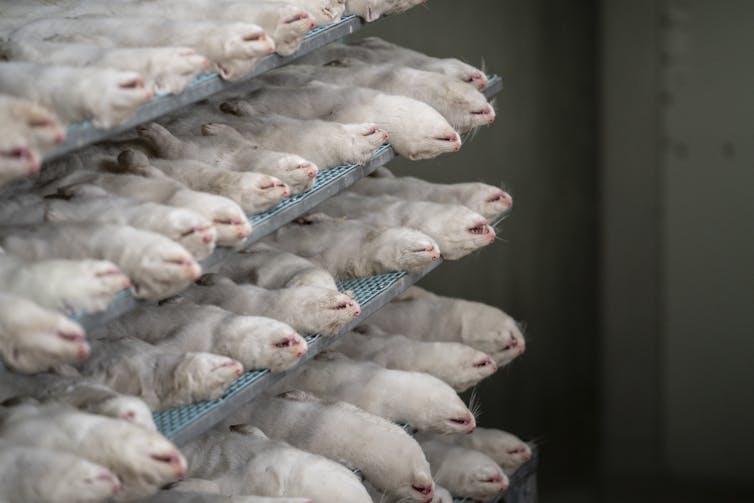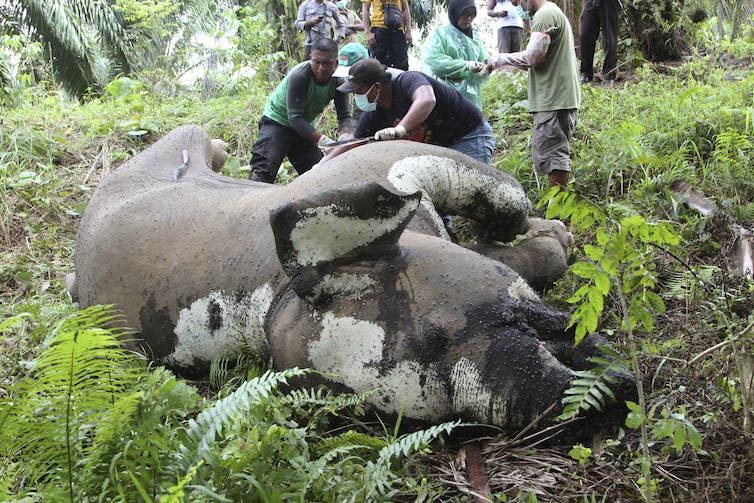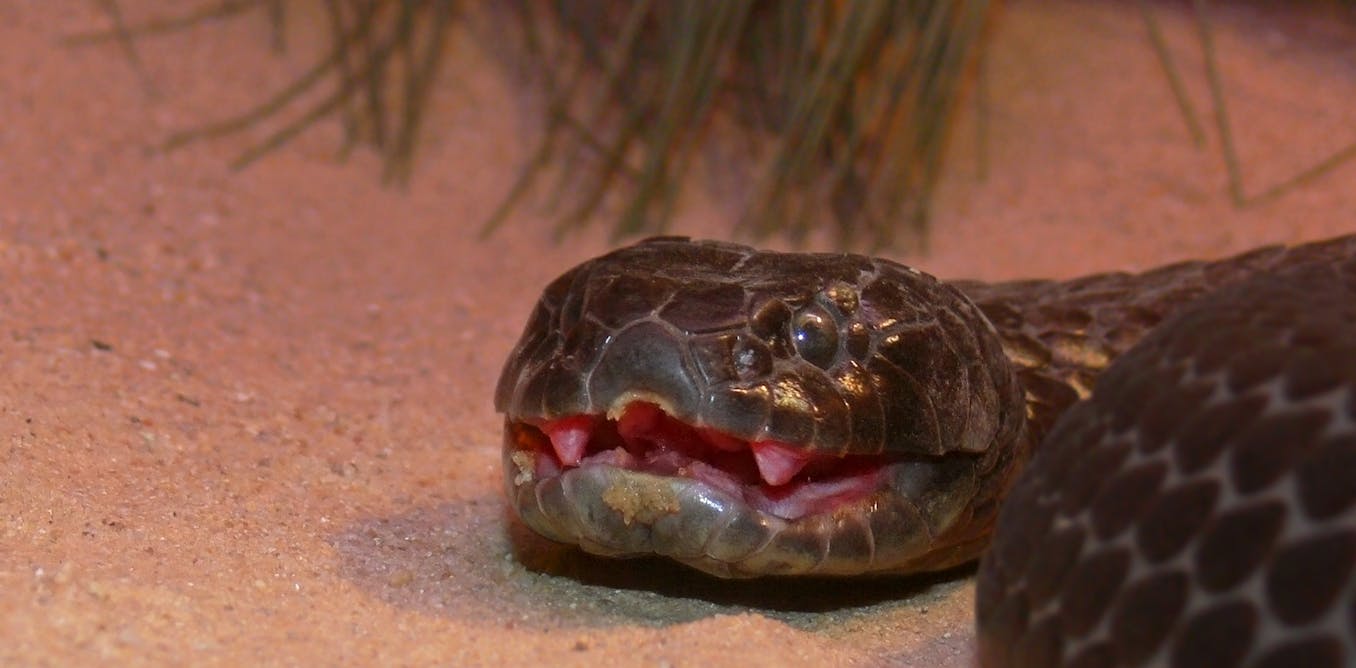As long as humans have existed, they’ve killed animals. But the necessity of some types of animal killing are now questioned by many. So can humans ever stop killing animals entirely? And if not, what’s the best way forward?
New research I led investigates these questions. My colleagues and I identified the ten main reasons why humans kill animals. We found the need for some types of animal killing is questionable, but several forms are inescapable – a necessary part of humanity’s involvement in a single, functioning, finite global food web.
But the debate doesn’t end there. Even if humans must kill animals in some cases, they can modify their behaviours to improve the welfare of animals while they are alive, and to reduce an animal’s suffering when it is killed.
Doing so may improve the lives of animals to a greater extent than efforts to eliminate human killing entirely.
S. Yulinnas/AP
Why humans kill animals
Critics of animal-killing come from a variety of perspectives. Some oppose it on moral grounds. Others claim animals should have rights equal to humans, and say animal killing is a criminal act. Many people view any animal killing as cruel, regardless of whether the animal suffers.
But as valid and important as these views might be, they largely fail to address why humans kill animals – and why in many cases, it can’t be avoided. Our research sought to shed light on this.
We focus our discussion on vertebrate animals which are almost universally recognised as “sentient” (or able to perceive and feel things). We identified ten main reasons humans kill animals:
1. Wild harvest or food acquisition: such as killing wild animals for meat
2. Human health and safety: such as reactively killing an animal when it attacks you
3. Agriculture and aquaculture: such as killing that occurs in the global meat industries, or killing required to produce crops
4. Urbanisation and industrialisation: such as clearing bushland to build homes
5. Wildlife control: such as programs that eradicate introduced animals to stop them killing native ones
6. Threatened species conservation: such as unintentionally killing animals when relocating them
7. Recreation, sport or entertainment: such as trophy hunting or bull fighting, and animal killing required to feed domestic pets
8. Mercy or compassion: such as euthanasing an animal hit by a car
9. Cultural and religious practice: such as animal sacrifice during the Islamic celebration of Eid al-Adha, or those associated with the Yoruba religion of West Africa
10. Research, education and testing: such as the laboratory use of rodents or primates.

Mads Claus Rasmussen/EPA
Understanding human killing behaviour
So how best should we understand the above types of animal killing? Our research considers them in ecological terms – as behaviours consistent with our predatory and competitive roles in the global food web. Such behaviours are intended to improve human prospects for acquiring food or to protect and enhance life. These are innate life objectives for any sentient animal.
Maintenance of all life on Earth requires obtaining, using, disposing of and recycling chemical elements. Ecosystems can be thought of as a “battleground” for these elements.
Some people argue that directly killing animals is unacceptable, or that adopting certain lifestyles or diets, such as veganism, can eliminate or greatly reduce animal killing. But in our view, achieving a no-killing lifestyle is a physical and ecological impossibility.
For instance, most plant foods come from crops grown on land where animals have been killed or displaced. And while an animal-free diet for humans might temporarily reduce the number of animals killed, this won’t last forever. As human populations continue to grow, more land will eventually be needed to meet their food requirements. At that point, humans will have to directly or indirectly kill animals again or risk dying themselves.
Humans also need space to live, which results in animal killing when habitat is razed.
Not just activists, 9 out of 10 people are concerned about animal welfare in Australian farming

FAZRY ISMAIL/EPA
Of course, in rare cases an individual human may live without killing animals directly. Perhaps they live in a cave in the forest, and get sustenance from wild berries and mushrooms. But that human still lives inside the food web, and is competing against other animals for finite resources. In these cases, other animals may suffer and die because the human’s use of berries and caves leaves less food and space for them.
Even if that human could do no harm at all to any animal, it’s still impossible for societies at large to live in this way.
Some forms of animal killing are certainly not essential for human existence. Good examples are recreational hunting, euthanasia or keeping pets (which requires killing animals to feed them). And we certainly do not condone direct human participation in all forms of animal killing.
It’s also important to note that in many cases, current levels of animal killing are unsustainable. Human populations have increased to the point where animals must be killed on enormous scales to feed, house and protect ourselves. If this continues, animal populations will crash – and with them, human populations.
Nevertheless, we maintain that the overall necessity of animal killing is an unavoidable reality for humanity as a whole. A variety of direct and indirect forms of animal killing will undoubtedly remain an ongoing human endeavour.

Lisa Martin/AAP
Taking responsibility
So what are the implications of all this? We hope our research leads to a constructive dialogue, which starts with accepting that human existence on Earth is dependent on animal killing. It should then focus on the nuances of animal welfare and sustainability.
Humans are the only known animals with an ethical or moral conscience. That means we have a responsibility to assume a stewardship role over all other animals, to resolve negative interactions between them as best as possible, and to ensure good welfare for as many animals as we can.
Directing our attention in this way is likely to improve the lives of animals to a greater extent than trying to prevent humans from killing animals altogether – efforts my colleagues and I believe will ultimately be in vain.
As the states consider animal welfare law reform, what changes would curb cruelty against animals?




